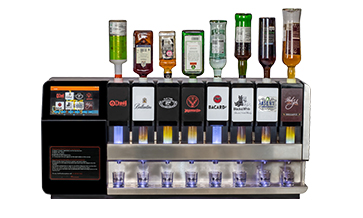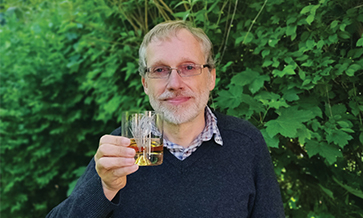The production of preform-based PET packaging is evolving rapidly in response to changing market trends and with the introduction of new technologies. The global demand for PET applications is growing for several reasons.
Producers are switching from alternate materials to PET because it is proving to be a tremendously flexible material that can easily adapt to new designs, be more sustainable by incorporating increasingly higher percentages of recycled content, and is extremely cost-effective, particularly as production is scaled.
As a result, the variety of packaging applications made with PET is expanding. While PET has historically been the material of choice for beverage packaging, it is becoming more common for an expanding list of applications, including for food, personal care, household, pharmaceutical and industrial packaging, many of which were previously only available in alternate materials like glass, aluminium or HDPE.
Consumer preferences
New generations of consumers are demanding a greater variety of more personalised products catering to their unique needs, styles, tastes and sustainability values. This shift has forced many producers to adapt manufacturing operations to produce a wider variety of applications.
From a production standpoint, this often means the need to support more SKUs, shorter production runs, and more frequent design changes. Fluctuations in market demand also influence production capacity, encouraging knowledgeable producers to look for ways to be more flexible and adaptable in their operations.
The Covid-19 pandemic has also had a big impact on patterns of consumption. A general trend has been the polarisation of size preferences moving away from the mid-size segment towards either large multi-serve sizes or smaller sizes sold in multiple packs.
For example, as consumers stocked up in anticipation of pandemic lockdowns, there was an increased demand for larger format packaging greater than 1.5 litres.
More of these applications are converting to PET because of its durability, greater clarity and sustainability potential with recyclability and lightweighting.
To meet this need, producers require more flexible and adaptable systems that are purpose-built to minimise the cost and time required to introduce tooling for alternate sizes and designs. This can include:
- Tooling designed to incorporate technologies that increase efficiencies and reduce maintenance intervals;
- Features to reduce the conversion and acquisition cost of tooling required for the repeated introduction of new SKUs;
- The capability to have systems configured to support increased levels of recycled content, various throughput requirements and different mould cavitations and pitches;
- Faster mould change-overs allowing for the switchover of production in a fast, cost-effective way;
- Large pitch systems specifically designed to produce large format and wide-mouth format food applications.
Becoming sustainable
Growing consumer demand, adoption by leading brands, and various recycled content mandates coming into effect over the next several years are all intensifying the need to deliver more sustainable packaging.
To succeed in today’s market, it is becoming increasingly clear that to be relevant producers must find ways to minimise the carbon footprint of their packaging – or risk falling behind on legislation and the competition.
The top sustainability issues that continue to be at the forefront of packaging include implementing the production of recycled PET materials, increasing the use of rPET materials, and the reduced use of PET resin through light-weighting initiatives.
But producing a more sustainable package requires careful planning, the right technology and working with an experienced provider to overcome common risks and challenges.
rPET collection and manufacturing technologies result in more variability in resin properties. When not properly addressed this variability has the potential to negatively influence aspects like material colour, material drying and processing conditions.
If not handled properly this can impact production and part quality and it usually occurs when the most common risks are not addressed and mitigated.
Because of its increased variability, there are several factors to consider when introducing post-consumer recycled material into packaging. These factors can include resin and melt preparation, melt delivery and distribution, preform design, processing, in-mould shaping, post-mould cooling, to finally the moulded part itself.
Despite these potential issues, implementing recycled content can be flawless with proper planning and the right technology. So how do you confidently make the move to rPET preform production? The key to effective risk mitigation is a multi-pronged approach where the system, tooling and auxiliaries are integrated and working together seamlessly.
Whether you have feedstock as palletised resin, pellets, or flake, Husky has a range of fully integrated platforms to help you produce high-quality packaging with the least amount of risk.
Light-weighting
Light weighting is a simple concept that makes sense: every one-tenth of a gram of resin you remove from a finished preform or closure reduces your production and part costs and increases your profitability. It’s also a great way to achieve your sustainability goals.
There are four main light weighting methods you can adopt. These include switching to a light-weight version of your existing thread finish; switching to a new dispensing system, which means a new lightweight thread finish and new closure design; redesigning and optimising the preform body to reduce weight; and redesigning the base of the bottle to use less resin.
Of course, these four methods can be implemented individually, or in combination to achieve greater savings. But when considering how to light-weight your packaging, it’s important to take a balanced approach. That means light weighting to achieve the lightest packaging possible, while maintaining bottle performance, package integrity and product freshness.
When selecting your equipment provider, you will experience a higher degree of success if you’re partnering with a company that has the packaging experience and expertise in converting to a lighter-weight product; knows how to create an effective design; has the tooling resources to help you modify your moulds; and can help you set up a seamless operation.
Increasing efficiency
With rising demand and on-going global challenges related to supply chains and skilled labour shortages, it is important to be prepared for and mitigate any potential disruptions. How do you do this while setting yourself up for predictable growth over the next 5 to 10 years?
Higher output systems are a way to reduce operating costs while boosting productivity. If implemented effectively this approach can result in massive bottom-line benefits and the lowest total cost per part produced.
This is possible because running a single high-output system (as opposed to multiple lower-output systems) can yield minimised labour and floor space requirements; reduced energy and maintenance costs; and less upfront capital requirements.
Whatever your production goals, Husky PET preform moulding solutions can deliver outputs on a smart, intuitive, productive system where all components are engineered to work together. An added advantage is working with a provider who has connected services to proactively monitor your system and who can handle all percentages of rPET material efficiently.
Performance monitoring
When it comes to gaining market competitiveness, achieving and maintaining the highest levels of performance can have a big impact on your bottom line. In fact, poor performance can lead to significant yearly losses.
If this is something your operation is experiencing, then you should consider implementing proactive performance monitoring as a strategy.
When compared to a reactive approach, expert proactive system monitoring provides several key competitive advantages, including predicting system performance deterioration and identifying system problems before they become major issues; and real-time monitoring to ensure and maintain the lowest total cost to produce.
Closed-loop reporting analysing system variables to anticipate, recognise and rectify potential issues before they impact productivity or part quality, and reducing the variability risk associated with part defects or running higher levels of post-consumer resin are also advantages to proactive system monitoring.
Introduced in early 2020, Husky’s Advantage+Elite real-time monitoring solution uses remote-connected technology to detect and identify changes in part quality and cycle time by monitoring leading system variables in customer operations.
By optimising the process to manage this condition, producers can maintain world-class OEE standards by recognising and rectifying potential issues before productivity or part quality is affected. (Courtesy: Husky Technologies)














